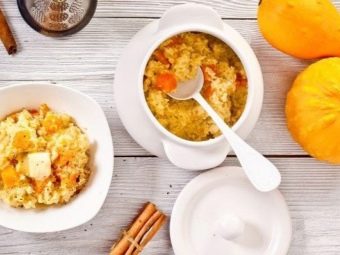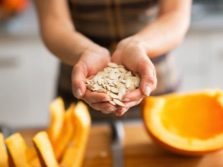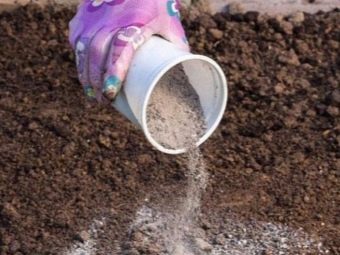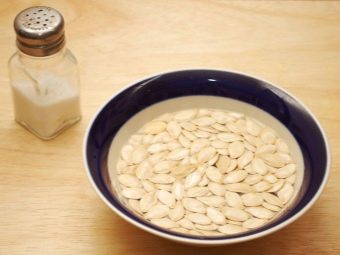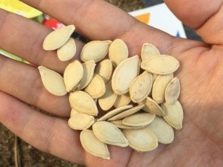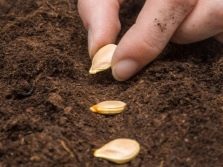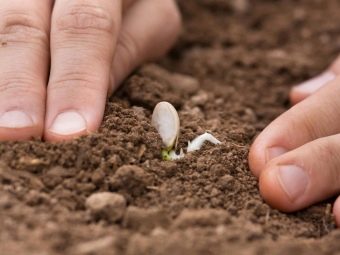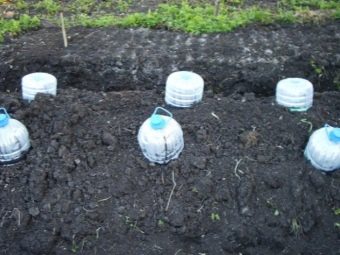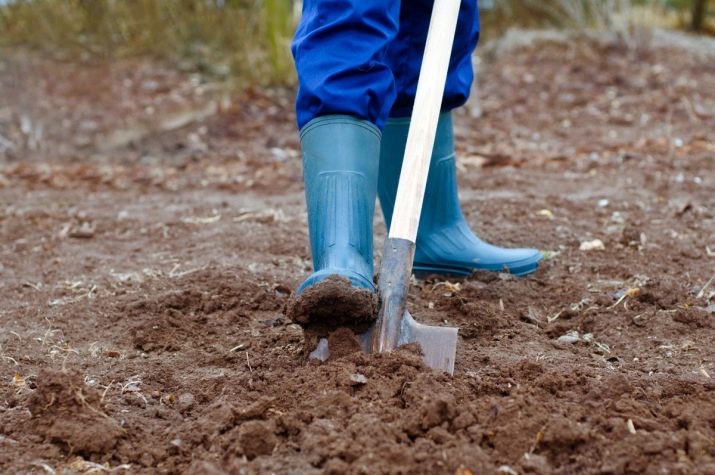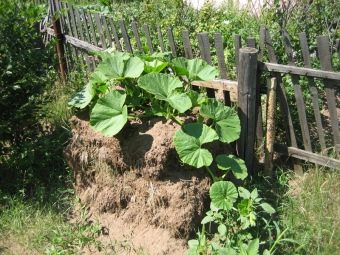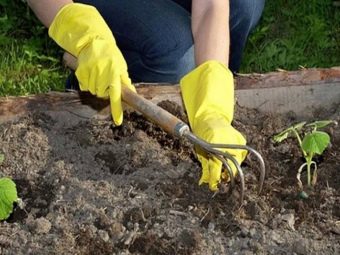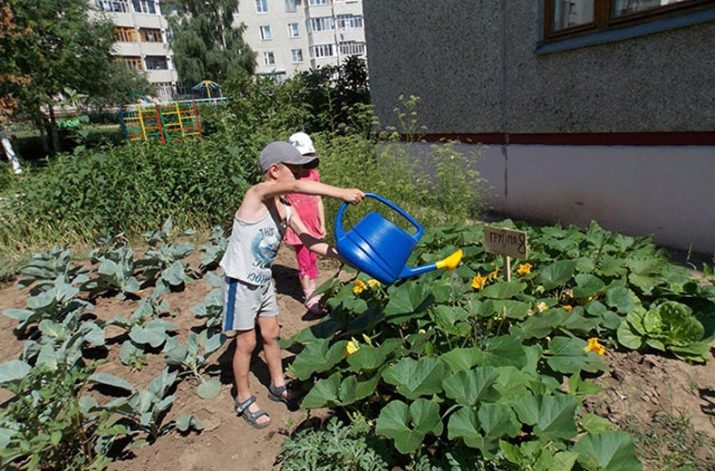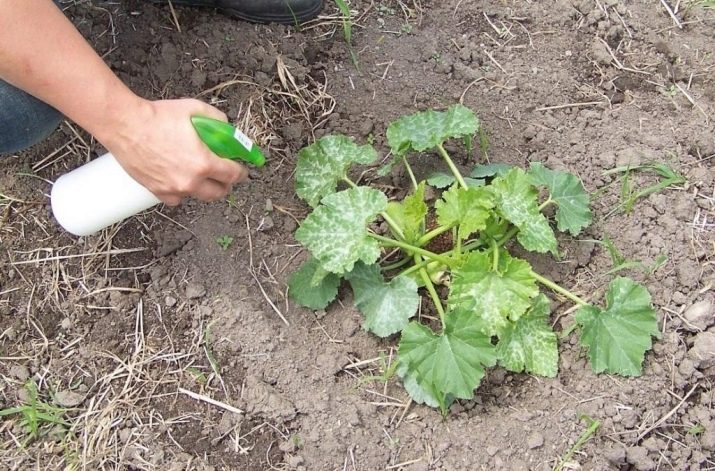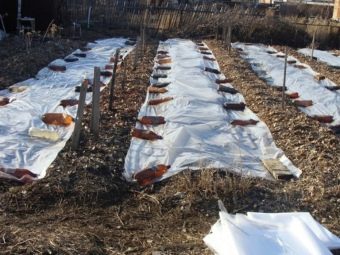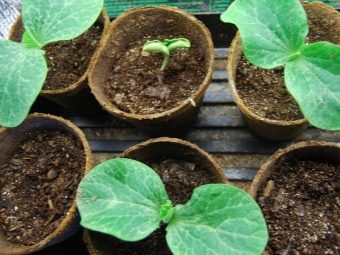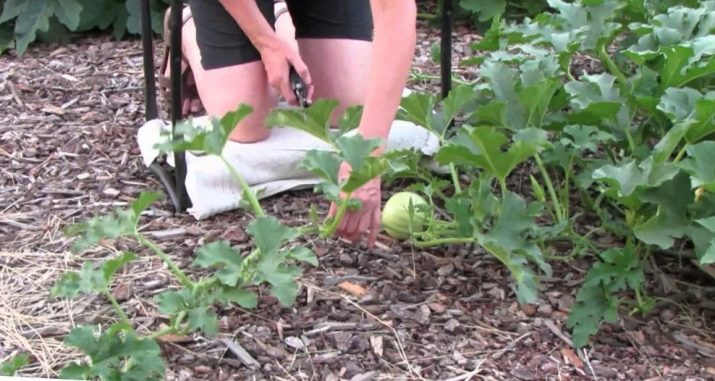How to plant a pumpkin?
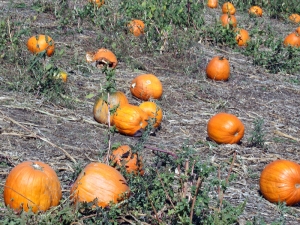
To enrich your body with beneficial substances, it is important to use those vegetables that contain the most vitamins and minerals. Such is the pumpkin, because its presence in the diet in any form is necessary.To have this vegetable on the table all year round, you need to know how to properly plant and grow it.
What time to choose?
Pumpkin - a culture originally from Mexico, which has got accustomed to the most different parts of the world Its benefits are immense. A person can use both the fruit itself, in which there is a lot of vitamin T, carotene and many other beneficial substances, and seeds that can be consumed in different forms, as well as make an oil of high value from them. Due to the low calorie content pumpkin is loved by those who wish to lose weight, in addition, the vegetable will be useful to those who suffer from cardiovascular diseases, problems with intestines and liver, anemia and not only.
Many gardeners and gardeners try to grow a pumpkin in the garden, but not everyone succeeds. In order for everything to be done correctly, first of all you need to ensure that the seeds are sown in the soil at the appropriate time. Pumpkin belongs to the heat-loving crops, because the sprouts from the cold and damp earth should not be expected. Choosing a suitable planting date, it is worth remembering about frosts, which can suddenly descend and destroy the next harvest.
The optimal time for planting a crop is the moment when the level of daytime temperatures does not fall below +18, and the soil should be heated to at least 12 degrees. The most comfortable temperature for a good growth of culture is +25, because the landing is most often carried out in May. It is during these periods that stable heat is established during the daytime, and at night the ground is not significantly cooled. If on the street the temperature level drops to +14, then the pumpkin stops its active growth.
The planting of this culture can be shifted in time, the main thing - to be guided by the indicators of air temperature and soil. Often, residents of the south are sowing by mid-May, and northerners postpone this process until the end of the month or the beginning of June. Those who live in the middle lane, are engaged in planting culture closer to the end of the month, from May 20 to 25, depending on the weather.
If you rely on national signs, then the most successful sowing day is considered the holiday of Yuri, when all the work in the garden should be done in the morning. It is not necessary to follow this calendar, you just have to choose a warm and lovely day, it is good to fertilize the soil, moisten and plant the seeds, which will soon yield a harvest.
Seed preparation
Since there are a lot of pumpkin varieties, you need to know what to plant on the site. Some options have a long shelf life, which is beneficial for the sale of vegetables, while others have early ripening. The only exception will be the nutmeg varieties, which should not be grown from seeds because of their extremely poor germination.
To germinate pumpkin seeds, it is worth examining them carefully before planting, in order to be able to identify stale, pest-affected or damaged specimens. If there are several varieties of pumpkin and it is difficult to give preference to any one, you can check their germination and choose the option where almost all the seeds germinate. For such an experiment, it is not necessary to create any special conditions, it will suffice to place the seed on wet matter and wait for some time.
Selection of seeds is one of the most important stages, because it must be carried out correctly. Only full-weight specimens can be planted in the ground, because it will accurately give growth and healthy, strong plant. To determine such seeds, you need to prepare 3 or 5% salt solution and pour seed into it. What will be on the surface of the water, you need to collect and remove, it is unsuitable for planting material. The seeds that have settled to the bottom are removed, well washed and dried.
In addition to the procedure for selecting the material for planting, it is also important to prepare it for germination and transplanting. In order for the germination to be synchronous, it is advisable to warm up all the seeds at a temperature of 60 degrees.When this procedure ends, the future plants are disinfected and protected from fungal diseases, for which the seed is dipped into manganese solution for 12 hours.
Since the peel of the seeds is rather dense, it is possible to make it easier for the young sprout to punch through it with boiling water and wood ash. Water needs no more than a liter, and ash - about two tablespoons. In the resulting solution you need to blot the gauze, folded in several layers, and wrap the seeds inside. This procedure lasts for 12 hours.
Finished seeds can be sown directly into the ground, if the weather is already suitable., or plant in a special container and germinate in the room. The optimum medium for seeding will be a container with sawdust, where boiled water is poured and covered with gauze in several layers. It is on such a surface that all the seeds should be placed, after which the procedure is repeated in the reverse order. The seeds fit the gauze, which is sprinkled with sawdust on top.
To grow seedlings as fast as possible, you need to create a greenhouse effect by wrapping the seed container with a film. In such conditions, after a few days, the first seedlings appear. If you do not use all these activities, the process of obtaining green shoots will be much longer. If pumpkin seeds are not processed before sowing, then there is a risk of getting a poor crop by the end of the season, especially in regions with a cool climate.
Sowing in the ground
Pumpkin belongs to melon crops, which are very fond of the sun and warm weather. Of all the varieties, it is the one that best suffers coolness, but it is still important to avoid frost, otherwise instead of a crop, there will simply be rotten seeds in the ground. You can plant a pumpkin manually if the size of the plot is not too large, or using a special machine.
In the first case, the landing pattern will be 30 cm long, placed at a certain distance from each other. The soil in which the seeds will be planted should be prepared. In the case of a snowless winter, it is important to pour into the land at least two liters of water with a temperature of 50 degrees. Landing is made only after all the water is absorbed into the ground.
The optimal distance from one bush to another will be from 1.5 to 2 meters. To make the lash of the future plant grow freely, it is worth keeping about the same distance between the rows. If the variety is bush, it can be planted in another way, maintaining a distance of 80 by 80 cm or 120 by 120 cm. The depth of planting depends on the soil - if it is light, you can deepen them to 8 cm, and heavier ones should not be lowered deeper than 5 cm.
In order for each well to sprout accurately, it is necessary to place from two to five seeds into it, and in the case of nutmeg varieties it is recommended to use more than 5 pieces.
For quick germination, you need to put the seeds "beak" down in the ground and position them so that there is at least 4 centimeters between them. Top it is important to sprinkle the seed with fertile soil, then mulch everything with humus or peat. There are cases when a self-made greenhouse with holes was installed above the hole, which accelerated the growth of pumpkin.
Care
If all the activities of planting seeds in the ground were done correctly, then after a week you will notice the first green shoots on the surface. To further everything went according to plan, it is important to create optimal conditions for young plants, which consist in watering, loosening and thinning the soil, feeding and pest control.
To get the maximum yield, you need to properly prepare the soil. The presence of mineral substances in it will be the key to success.
Soil for planting culture is prepared in advance, since autumn.
The main works are as follows:
- cleaning of the future bed from weeds and everything superfluous;
- loosening the soil with the help of a hoe, without going deep;
- after a couple of weeks, it is necessary to dig the entire area and remove the remnants of the roots of weeds.
Spring processing is much simpler, it consists in digging up the site a day before planting seeds. In the absence of such an opportunity, it is possible to prepare the soil on the same day. During this procedure, it is important to add fertilizers so that during the growth of the pumpkin it was from where to take the nutrients. When the soil is ready, it needs to be properly leveled with a rake.
In order for the plant to develop quickly, it is better to give preference to the compost heap, which is evenly distributed on the plot and serves as an excellent fertilizer. An alternative may be manure or humus. To make such additives must also be correct. The optimal amount will be from 5 to 10 kg per meter of beds. Fertilizer placement depth is approximately 20 cm if the soil is light, and about 15 cm if it is heavy.
When there is a shortage of fertilizer, it is not distributed throughout the site, and in the wells, at least 2 kg per bush. To counter the various negative factors, it is worth adding an additional 20 g of superphosphate and 10 g of potassium. The entire contents of the hole is carefully dug up to create a uniform soil, after which you can make seeds. There is the option of growing pumpkins directly on the compost heap, which helps to significantly increase the yield.
The advantages of this method include:
- no weeds on the compost heap due to the active green part of the pumpkin itself;
- pumpkin helps to decompose faster components of the compost heap;
- the green part of the plant closes up a heap, which helps to hide it in the area;
- the presence of pumpkin helps to maintain an optimal level of moisture and does not dry out the compost.
After the process of planting seeds, regardless of the location, it is important to continue caring for the soil, which will require its loosening and thinning. Such procedures are carried out after it rains or is watered. As soon as shoots appear, it is necessary to carry out the first loosening, working with soil at a depth of no more than 8 cm. If irrigation is planned, then it is necessary to loosen the soil between the rows, penetrating into it no more than 12 cm, which will help the water get to the roots much faster. It is best to additionally also spud the bushes, which will make them more resilient.
Since two to five seeds are sown in one well, and in some cases even more, then during the growing up of a bush and the formation of more than two leaves on it, thinning is necessary so that no more than two shoots grow in the hole, and in the case of large-fruited varieties one is enough. When the bush grows even more and there will be about 4 leaves on it, the second thinning stage is carried out, after which the strongest bush is left. At this moment, the plant is already quite large, but the root system is very delicate, therefore, it is not necessary to tear out an unnecessary sprout, you just need to cut it at the root.
Another point worth noting is pollination. For good yields, bushes should be pollinated, but if there are few insects, this process will have to be carried out independently. In this case, it is important to understand where the female and male bushes. The females are located on the stems and have the ovary immediately under the petal, the males have an elongated leg, which is how they differ from the females.
The pollination process is carried out in the morning, no later than 10 hours. The procedure is that the male flower falls off the bush, it breaks all the petals and with the help of the anther goes to touch all the female flowers. If, at the time of pollination, the male flowers have not yet opened, you can take the flower of the related culture and carry out the procedure. The most preferred in this case zucchini.From the biggest pumpkin bushes, which developed well and gave a full harvest, you need to collect seed for planting next year to be sure of the quality of the seeds.
Watering
Any plant needs water, especially if it is a vegetable. A pumpkin is not an exception, and since its leaves are large, the moisture evaporates from them fairly quickly and needs to be replenished regularly. The peculiarity of this plant is that watering should be carried out only with the help of warm water. The more the crop grows, the more moisture it requires, and its absence will affect both the bushes and the size and quality of the fruit.
When the pumpkin begins to bloom, it is better to reduce the amount of moisture introduced under the shrub, which contributes to a better ovary of the fruit. Watering returns to the usual norms already when the fetus begins its active growth. By the time the fruits are almost ready to be harvested, the average amount of moisture applied under the shrub is 10 liters. As soon as the fruit gains optimal dimensions and stops growing, the plant can no longer be watered.
Top dressing
Since the pumpkin forms many leaves and fruits during growth, it cannot do without timely supplements. Vegetable fertilizers are best absorbed by liquid fertilizers, which are applied to the soil with irrigation. The first feeding must be carried out after three weeks from the date of planting seeds. For the procedure, chicken manure or manure will be suitable, which must be diluted with water in the ratio of 1 to 4. This composition is added to the soil every week.
Another type of fertilizer is wood ash, a glass of which is dissolved in a bucket of water and poured under a bush.
The process of fertilizing culture has its own characteristics:
- for the first feeding, furrows up to 8 cm in depth should be made at a distance of 10 cm from the bush and pour the mixture into them;
- for further dressings, the depth of the grooves is increased to 12 cm and placed them at a distance of 40 cm from the bush.
When nutrients have been introduced into the ground, it is important to cover the furrow with earth.
In case of stable cloudy weather, the treatment of the plant with a solution of 10 g of urea per 10 liters of water is necessary. It is such events that allow you to get a healthy bush and full-fledged ovaries on it, which will have time to gain the desired size and keep up to the time of harvest.
Tips
To obtain stable and high yields of pumpkin in the area, you need to know certain secrets of growing this vegetable. The first step is to take care of the choice of the site where the pumpkin will feel most comfortable. The best place will be that is protected from strong gusts of wind and has good sun illumination. A full bed for such plants should have dimensions of at least 6 to 6 meters.
Site preparation will be a guarantee of good growth of all bushes, because in the middle you need to dig a square of 1.5 by 1.5 meters and pour a mixture of humus and fallen leaves that have been previously mixed into it. You can also add waste from the garden to this composition. The resulting composition should be sprinkled with earth and not much to dig. The depth of such an organic layer is 25 cm, it is prepared for wintering, pre-watered.
As soon as all the snow melts, this organic area needs to be covered with foil. The next stage is the preparation of seeds for planting, the selection of the best of them and germination. If a wet cloth can be used as a standard for the procedure, then an alternative would be to use wet moss, which is sprayed from time to time with warm water.
To get a good harvest, after the appearance of a green sprout, you should not hurry to plant a pumpkin in open ground, it is best to place it in a separate pot, on the bottom of which a film is laid, significantly protruding beyond the limits of the container, so that it is more convenient to remove the ready bush.
The soil, which is placed in such pots, can be bought in a store or made with your own hands, for which you need:
- peat in the amount of 2 kg;
- humus - 1 kg;
- sawdust - 1 kg;
- nitroammophoska - 20 g
When the first sprouts appear, you need to help them grow, for which they use a fertilizer from azofoski or mullein. The next feeding must be planned a few days before the plants will be transplanted into the open ground.
If the pumpkin is grown in pots, then the strongest shoots are selected for sowing.
Care for pumpkin will be to protect against pests and diseases and timely watering. To achieve a large harvest and large fruits, you need to leave the main whip long - about 7 meters, and its end cut and prikopat. The rest of the whips are released much shorter (no more than 3 meters), and each new one will be shorter than the previous one by at least a meter. Everything that will appear from the sinuses of secondary lashes, it is important to remove in time, so that the plant does not waste energy.
When three pumpkins appeared on the main whip, the rest should be removed. At the moment when the pumpkins grow to the size of the ball, out of three leave one, the most even and quality. During this period, an important event is to protect the fetus from the sun's rays, which contribute to the hardening of the peel.
The procedure for watering the plants will vary depending on the weather. If it is too hot, then you need to bring moisture at the very root. The best time is evening, so that the soil does not dry and does not become covered with a crust. Water intended for irrigation must be pre-settled.
Different varieties of pumpkin may require to themselves certain features in the care. The nutmeg variant is very thermophilic and does not always ripen in cool regions, therefore it is recommended to plant it in the form of seedlings for faster growth. Large-fruited varieties are not always in demand, as they can reach 15 kg, which complicates their storage due to limited space.
Pumpkin is a gourd crop, but planting next to related plants is not advised. Planting watermelons and melons next to them is not worth it, because in the process of pollination they will affect the taste qualities of each other. Also, do not place a number of cucumbers and zucchini, especially if the seed collection is carried out independently. After the joint growth of crops from seeds, the new crop will turn out to be distorted, the crust may be too thin or the taste will be unpleasant. The same is the case with zucchini.
To avoid such problems, it is important to prepare a plan for seating all crops on the site, taking into account their preferences in neighbors and the most comfortable living conditions. Those who correctly have all the beds, will be able to get a full harvest, which will please both quantity and quality. In the case of any neighborhood disturbances, the vegetables are obtained hybrid, with external or taste properties of the neighboring culture. If you choose the wrong place, the crop may not mature at all, which will not yield the expected yield.
Growing a pumpkin in the garden is easy enough if you know all the details of the process and implement them in time. Optimal conditions, good watering and timely feeding will make it possible by the autumn to get a good harvest of a useful product that will maintain the health of the whole family at the proper level all winter long.
For how to plant pumpkin seedlings, see below in the video.


